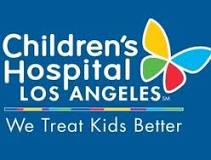Surface EMG Biofeedback for Children With Cerebral Palsy
| Status: | Recruiting |
|---|---|
| Conditions: | Neurology, Orthopedic |
| Therapuetic Areas: | Neurology, Orthopedics / Podiatry |
| Healthy: | No |
| Age Range: | Any - 21 |
| Updated: | 9/9/2018 |
| Start Date: | May 2012 |
| End Date: | January 2020 |
| Contact: | Aprille Tongol, B.A. |
| Email: | tongol@usc.edu |
| Phone: | 213-740-1317 |
Clinical Trial of Surface EMG Biofeedback for Children With Cerebral Palsy and Associated Movement Disorders
Movement disorders such as dystonia, hypertonia, and spasticity interfere with or prevent
voluntary movement. Studies have suggested that using biofeedback to increase awareness of
muscle activation can improve motor function in patients with motor deficits. The
investigators hypothesize that the daily use of a surface electromyographic (SEMG)
biofeedback device for one month will improve motor function in children and young adults
with dystonia, hypertonia, and/or spasticity. The SEMG biofeedback device is worn over the
muscle(s) the subject has difficulty in controlling and provides vibratory feedback about
muscle activation. Groups of children and young adults (ages 3-21), with dystonia,
hypertonia, and/or spasticity will be asked to wear a small (approx 1 square inch) sensory
feedback device on their affected muscle(s) for 5 hours a day for one month. The device will
vibrate and emit a blue light when the muscle is activated. At the start of the experiment,
subjects will be tested on the Goal Attainment Scale (GAS), the Pediatric/Adolescent Outcomes
Data Collections Instruments (PODCI), and the Barry Albright Dystonia Scale (BAD). For one
month, subjects will practice goals without device. After a month, subject will be assessed
again and be given device to practice goals for a month. After one month, the subjects will
be tested on the outcome measures again and return device.
voluntary movement. Studies have suggested that using biofeedback to increase awareness of
muscle activation can improve motor function in patients with motor deficits. The
investigators hypothesize that the daily use of a surface electromyographic (SEMG)
biofeedback device for one month will improve motor function in children and young adults
with dystonia, hypertonia, and/or spasticity. The SEMG biofeedback device is worn over the
muscle(s) the subject has difficulty in controlling and provides vibratory feedback about
muscle activation. Groups of children and young adults (ages 3-21), with dystonia,
hypertonia, and/or spasticity will be asked to wear a small (approx 1 square inch) sensory
feedback device on their affected muscle(s) for 5 hours a day for one month. The device will
vibrate and emit a blue light when the muscle is activated. At the start of the experiment,
subjects will be tested on the Goal Attainment Scale (GAS), the Pediatric/Adolescent Outcomes
Data Collections Instruments (PODCI), and the Barry Albright Dystonia Scale (BAD). For one
month, subjects will practice goals without device. After a month, subject will be assessed
again and be given device to practice goals for a month. After one month, the subjects will
be tested on the outcome measures again and return device.
Inclusion Criteria:
- Cerebral palsy, or associated movement disorders such as dystonia, spasticity, and/or
hypertonia
- Able to wear device for given amount of time
Exclusion Criteria:
- Unable to wear device for at least 5 hours day for a month.
We found this trial at
1
site
4650 Sunset Blvd
Los Angeles, California 90027
Los Angeles, California 90027
(323) 660-2450

Principal Investigator: Terence Sanger, MD, PhD
Phone: 213-740-1317
Childrens Hospital Los Angeles Children's Hospital Los Angeles is a 501(c)(3) nonprofit hospital for pediatric...
Click here to add this to my saved trials